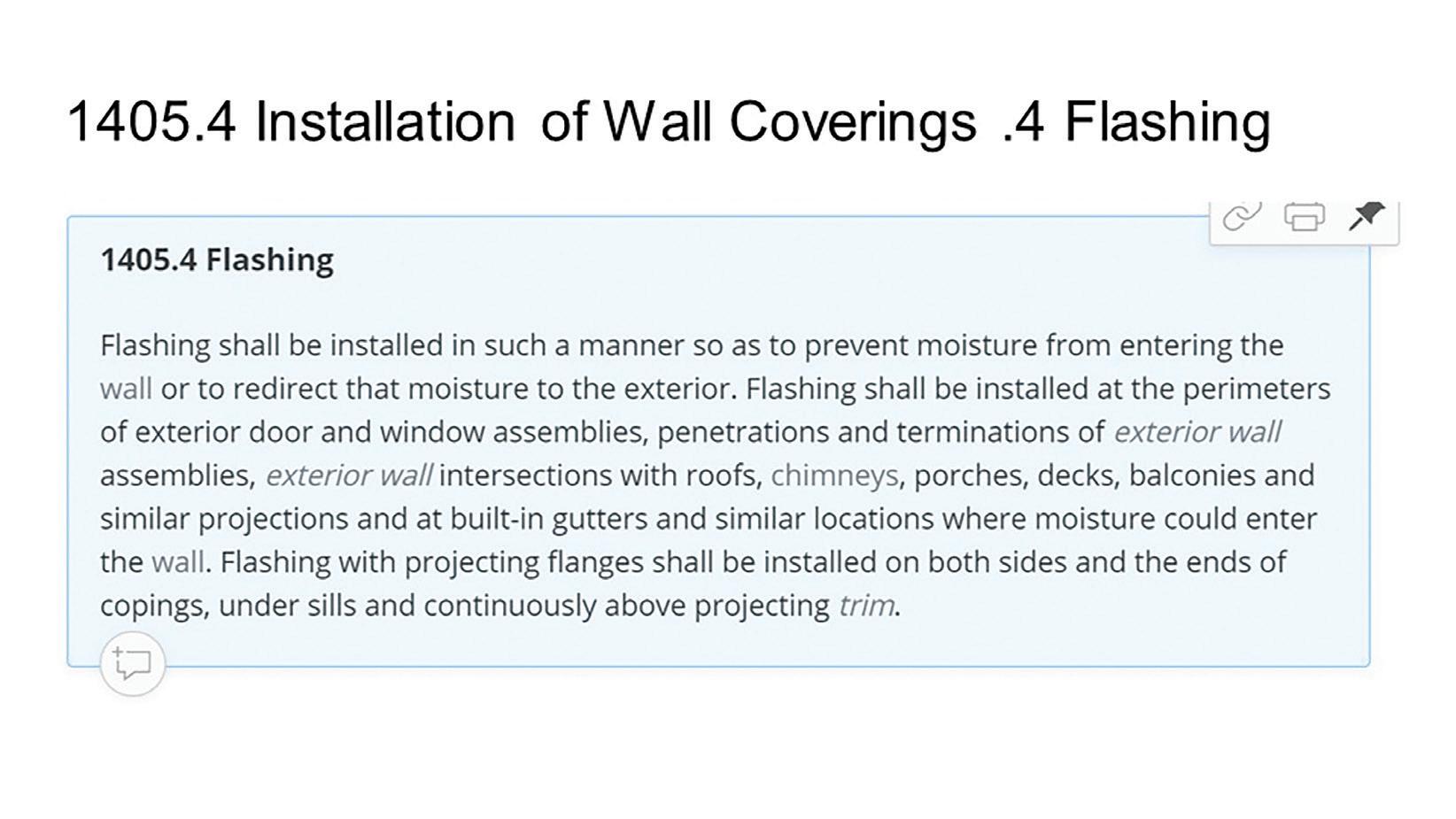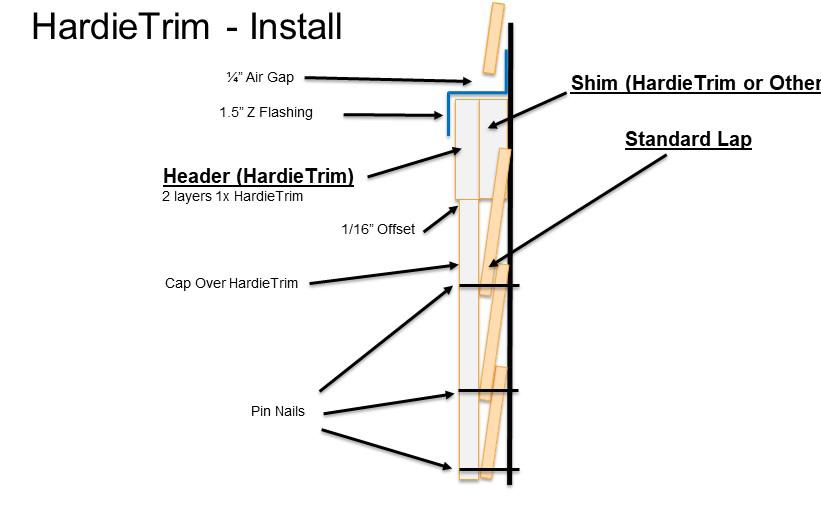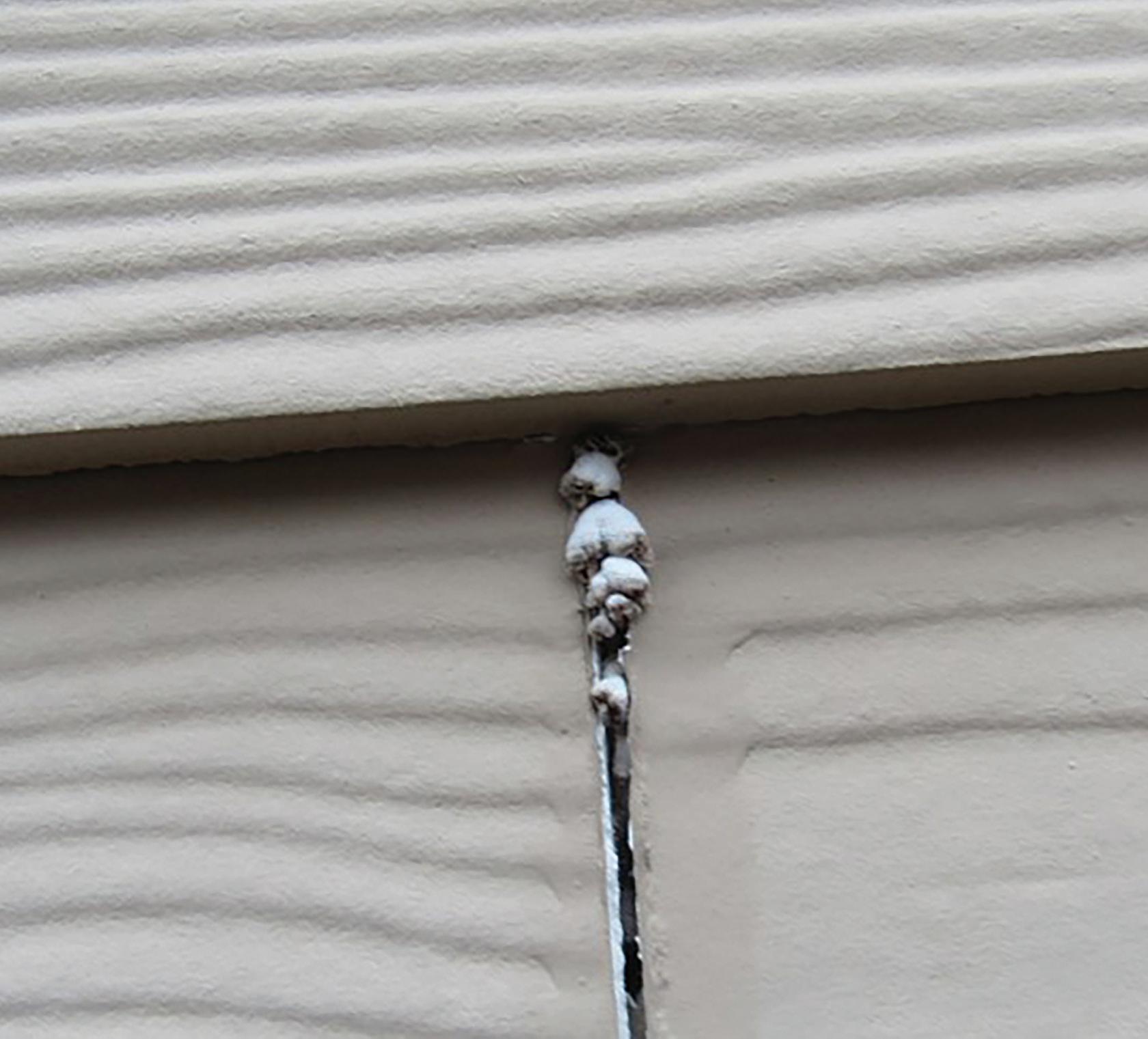
11 minute read
TECHNICAL FOCUS Fiber Cement Siding: Distinguishing Fact From Fiction
from April Reporter 2020
by ASHI
The opinions expressed in this article are those of the author only and do not necessarily reflect the opinions or views of ASHI. The information contained in the article is general and readers should always independently verify for accuracy, completeness and reliability.
FIBER CEMENT SIDING: DISTINGUISHING FACT FROM FICTION By Dylan Chalk, ACI
Advertisement
Dylan Chalk, ACI, is the owner of Dylan Chalk House Talk real estate school, cofounder of ScribeWare LLC report-writing software (www.scribeware.com); owner of Orca Inspection Services LLC; and the author of The Confident House Hunter (www.dylanchalk.com). Dylan is a Washington state–licensed home inspector, structural pest inspector and a licensed real estate clock-hour instructor. Chalk is a member of ASHI and the President of ASHI Washington Chapter (2018-present), and he has performed more than 6,000 structural home inspections.

Fiber cement siding is now the most commonly installed siding in some climate zones. The largest manufacturer has an excellent installation guide. Fiber cement siding should be easy to inspect: It’s right or it’s wrong. The problem is, it is never installed perfectly and it can be tricky to distinguish common installation errors from serious dysfunction. Adding to the confusion, it is not always clear where the manufacturer is making installation recommendations or installation requirements. James Hardie Building Products Inc. has 13 items that they consider critical to durability, which they refer to as CTDs (Box 1), but a host of other installation recommendations are made for cosmetic reasons. So, how can we advise our clients? CRITICAL TO DURABILITY (CTDs)
Box 1. James Hardie’s critical to durability items (CTDs).

I have taught several classes with representatives from James Hardie Building Products Inc. aimed at dispelling common myths about fiber cement siding and discussing some tricky situations that can arise when inspecting these siding systems. Although I cannot explain in detail every problem or installation related to fiber cement siding in this article, I will share a few highlights that I hope will prove helpful.
A NOTE ABOUT MANUFACTURERS OF FIBER CEMENT SIDING Fiber cement manufacturers have done a poor job marking their products so they can be distinguished from each other after installation. In my region, James Hardie has more than 95% of the market, so it is likely that the fiber cement siding I am inspecting is a James Hardie product. That said, it can be difficult to be certain and other brands of siding may be more prevalent in other regions of the country. If I reference fiber cement installation guidelines in my reports and I am not certain it is a James Hardie Product, I use the following language: Manufacturers of fiber cement siding have done a poor job helping inspectors and consumers distinguish their products after installation; fiber cement siding products have few if any distinguishing characteristics. Where needed, this report will cite James Hardie manufacturer’s installation requirements for reference because they are the most common manufacturer of fiber cement siding and the various manufacturers seem to share similar installation guidelines. However, reference of these guidelines in this report does not ensure that the fiber cement siding installed here is a James Hardie product. COMMON INSTALLATION MYTHS AND GRAY AREAS 1. Cap-over trim detail is allowed by James Hardie. PARTLY TRUE. The cap-over trim detail is something that has never made sense to me and creates a great deal of confusion on home inspections (Photo 1). Some inspectors do not consider this a defect, but other inspectors do. The International Residential Code (IRC) specifies that all horizontal flashing (or trim) details should be flashed in a weatherproof fashion (Box 2). I cannot understand how the cap-over detail meets code and yet, Photo 1 shows new construction, inspected and approved by my local authority having jurisdiction (AHJ). The builder’s argument here is that the flashing and flange on the window frame are the flashing for this penetration, and the unflashed trim is considered “sacrificial,” like a window shutter. While this may be accurate, it seems to be a poor quality detail and one could argue that water could seep around the nail penetrations where the trim nails penetrate the siding. If nothing else, this detail provides an excellent place for ferns to grow and I feel the need to report on this as a vulnerable detail that will likely require future maintenance.
Photo 1. Cap–over trim detail on new construction.


Interestingly, when I have spoken with James Hardie representatives about this detail, they have some new designs that they recommend when builders are using Hardie Trim products. These new details include a header detail, in which the Hardie Trim is led to the siding and flashed on the header trim piece, and a cap-over detail is used for the remaining three sides of the trim below the header (Figure 1). This detail is new and has not made it into the Hardie manuals as of the publication of this article, but Hardie is contemplating this.
Note: Hardie does not state a position if unflashed wood trim rots and fails because the unflashed wood trim is not their product. So, the trim detail shown in Figure 1 is only a recommendation for Hardie Trim.
2. The Hardie warranty covers the entire siding installation. MYTH. This is not true. James Hardie makes a product: fiber cement siding. If you use their product and install it to their installation requirements, they guarantee that their product will not break down and fail. However, if a board fails that is not installed correctly (for example, a board in ground contact), Hardie will not guarantee that board, but this does not void the warranty for the rest of the boards that were installed correctly. The Hardie warranty is board-by-board and does not extend to the performance of the entire siding installation or to other siding materials and products that could have been used in conjunction with their siding. In theory, a siding installation could have numerous failures where water is penetrating the siding and, while Hardie would not approve of such a poor installation, their concern and warranty are focused on their product, not the installation, the house or even the wood trim, which is not their product.
3. Back-flashings at butt joints are required. PARTLY TRUE. Since 2008, Hardie has recommended a back-flashing detail for their installations (Figure 2). If you are inspecting the Hardie pre-finished product, back-flashings behind butt joints are required, as caulking cannot be used for cosmetic reasons. If the fiber cement siding is to be painted, the use of back-flashings is recommended, but not required. The joints can be left in moderate contact and caulk can be used to seal the opening. This is clearly less reliable, requires a higher level of maintenance and is unsightly, as caulk lines are visible, but the caulked butt joint detail is allowed.
Shim (Hardie Trim or Other)

Figure 1. The proposed Hardie Trim Header Detail.
Figure 2.

4. James Hardie siding cannot be both blind nailed and face nailed. PARTIALLY TRUE. While James Hardie does not recommend designing and installing a complete siding system with both blind and face nailing, they do allow for double nailing to repair localized areas of loose siding. This is referred to in Technical Bulletin 17 (Box 3). This repair nailing schedule can be recommended for areas of siding that are loose or have been inadequately fastened, highnailed or have over-driven fasteners. this brings up one of the more difficult things I find in even mentioning some of these details during a home inspection: What if the repair you recommend is botched so badly that the owner of a house would be better off living with a detail that is not done correctly? The fact is, it is common to see details that are incorrect when inspecting siding installations. However, many incorrect details may not be not worth correcting, as the repair could risk causing more damage than leaving the issue unrepaired. An example of this is when a concrete patio has been poured over the siding (Photo 3). This is
TECHNICAL BULLETIN 17 Fixing loosely installed boards either by high nailing insufficient nails, or over–driving nails.
Box 3. Slide from James Hardie showing Technical Bulletin 17.

5. Mushrooms growing out of the siding butt joints is a big deal (Photo 2). FACT. Fiber cement siding is made of 98% cement with 2% wood fiber to bind the cement together. This product will not support the growth of fungus. If you see mushrooms growing between the joints in the siding, the siding system and weather barrier below have failed, and the mushrooms are growing out of the sheathing. Discovery of mushrooms on a fiber cement installation should trigger a big red flag and an important comment in your report to recommend having an additional inspection of the siding installation, and indicating that there is likely concealed water damage.
6. Penetrations in fiber cement siding greater than 1½ inch should be blocked and flashed, and all openings should be sealed properly. FACT. Hardie spells this out in their installation guide by stating that most penetrations will require blocking and flashing, so this may require some “planning.” In my experience, this is one of the most common installation defects. Hardie does spell out that if a block is retrofit, it should be cut in half and weather-cut to shed water, so when you see this on new construction, there is a provision for correcting the installation error (Figure 3). However,

not correct, but repair at this point would require removal and replacement of the concrete patio. Unless there is some evidence that damage is being caused at the time of inspection, it is hard to say that this is worth correcting at this time, especially if the concrete is protected by a roof overhang. I am aware that some inspectors may not agree with me on this point, and that each installation and situation needs to be considered on a case-by-case basis, but this is my view on some installations. TRYING TO PROVIDE SOUND ADVICE Some of you may be thinking, “Just recommend additional inspection and move on” or “It’s not our job.” But I believe that the advice we give to our clients has a direct bearing on our reputation and it matters that we provide the soundest advice possible. To this end, I often state that some incorrect details are not worth correcting at this time. This can be an uncomfortable statement to deliver, because it suggests that something is wrong and not worth fixing. I can understand why some may wish to avoid making these types of statements. These are the tricky business decisions we make as inspectors, and dealing with these decisions is why I try to explore this topic in my fiber cement siding class and in this article. The following general comment is an example of how I might use my inspection report to describe an installation that seems to be doing pretty well, but has a few problems that can be repaired and some problems that cannot be repaired: Visual inspection of the fiber cement siding installation showed the need for repairs, as well as some installation details that are not consistent with modern manufacturers installation requirements. This is typical for this age of construction. Some of the items noted can be repaired or improved, while other items will not be cost-effective to correct until a larger re-siding is needed. Consult with a qualified contractor to further investigate the siding and repair as recommended to prolong the useful life of the siding. Examples of observations noted during inspection include: … Figure 3. Slide from the James Hardie HZ 10 guide showing a mounting block detail.

Photo 3. Concrete Installed in siding contact—a common installation error that is typically not cost-effective to correct until needed.

After making this general comment in my report, I provide a bulleted list of specific observations that I noted during my inspection. I also provide related photos and captions. I hope the sample language and technical discussions help you handle your next inspection of a fiber cement–sided house. I am available to teach a class about fiber cement siding to your ASHI chapter if you would find a longer presentation helpful. Friendly feedback is also most welcome; we are always learning and getting better.
Double the equipment coverage, same price
When you purchase Inland Marine coverage with InspectorPro with the ASHI Advantage, we’ll double your tools and equipment coverage to $20,000.









